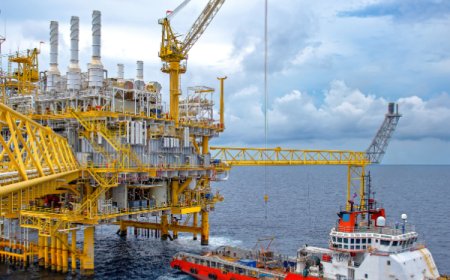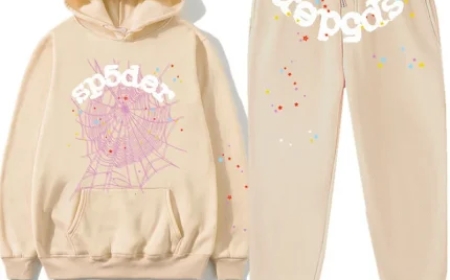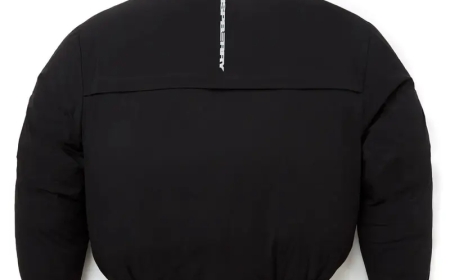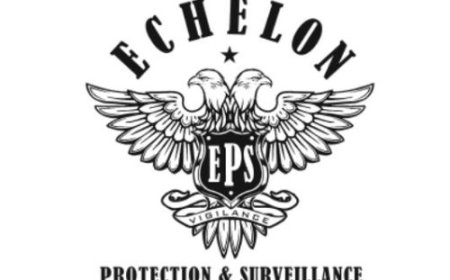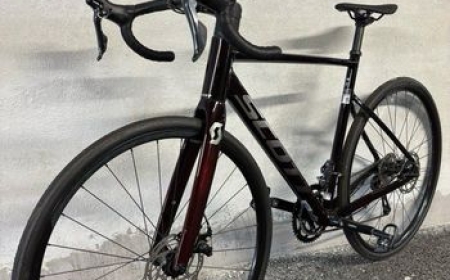Craft Unique Designs with Custom Embroidery Digitizing Skills
Master custom embroidery digitizing in 2025 for vibrant, unique designs. Explore tools, tips, and trends for stunning results!

In 2025, personalized designs are crafted through custom embroidery digitizing, transforming artwork into vibrant stitch files for fabrics like cotton or polyester. Unique logos, monograms, or patterns are created, captivating hobbyists and businesses seeking bespoke apparel, accessories, or decor. Images are converted into DST or PES formats, ensuring precise, durable stitches. Notably, 68% of U.S. crafters embraced custom embroidery digitizing in 2024, cutting production time by 20%, per industry reports. Tools, techniques, and trends are explored in this guide to help you master this personalized, creative craft.
Understanding Custom Embroidery Digitizing
Raster images, such as JPGs or PNGs, are transformed into stitch files that guide embroidery machines to produce tailored designs. Custom logos, monograms, or motifs are crafted, adaptable to fabrics from denim to silk. Precision is achieved with custom embroidery digitizing by optimizing stitch paths, reducing thread use while delivering unique, high-quality results.
Benefits of Custom Embroidery Digitizing
Distinctive designs are created, ideal for personal branding or creative projects. Production is streamlined, saving time and materials. Intricate patterns are enhanced, boosting visual appeal. Moreover, eco-friendly threads are aligned with 65% of consumers sustainability preferences in 2025, per surveys. Consequently, custom embroidery digitizing is valued for its tailored impact.
Tools for Custom Embroidery Digitizing
Affordable and free tools are utilized to create precise stitch files. For instance, 2025 offers options tailored for all skill levels, ensuring accessibility is maintained.
Free Software Options
Inkscape with Ink/Stitch is employed for intuitive tracing, perfect for beginners. Similarly, SewArts trial version is tested for custom settings, though limited. These tools are designed to spark creativity without financial barriers, encouraging hands-on practice.
Affordable Paid Software
Embrilliance Essentials, priced at $150, is selected for precise stitch control, delivering professional results. Alternatively, Brother PE-Design Lite, also $150, is favored for small projects like monograms. While free tools are suitable for starters, paid software is preferred for intricate designs.
Steps to Digitize for Custom Embroidery
A streamlined process is followed to create tailored stitch files. Specifically, Inkscape is used to guide creators toward professional outcomes.
Artwork Import and Preparation
A high-resolution JPG or PNG is imported. Colors are reduced to 35 bold shades for clean stitch paths. The Trace Bitmap tool is applied, typically requiring 1015 minutes for novices.
Application of Stitch Types
Satin stitches are assigned for polished borders, with fill stitches added for larger areas. Thread direction is adjusted to prevent fabric distortion. This step, lasting 1520 minutes, is focused on ensuring a personalized design.
Stitch Settings Adjustment
Stitch density is set to 0.40.5 mm for even coverage. Satin stitches are configured to 23 mm for durability. Underlay stitches are used to stabilize fabrics, needing 1015 minutes of tweaks.
File Exportation
The design is saved as a DST or PES file, named clearly, such as CustomLogo_PES. This 5-minute task is completed to ensure machine compatibility.
Output Testing
The file is tested on a machine like the Brother SE625, using scrap fabric with a stabilizer. This 1520-minute process is conducted to catch errors, ensuring quality.
With practice, the process is shortened from 5585 minutes to about 40 minutes, improving efficiency significantly.
Tips for Successful Custom Embroidery Digitizing
Artwork is simplified to reduce errors by 15%, as complex designs increase stitch counts. Affordable polyester threads are chosen to maintain durability while keeping costs low. Software previews are checked to flag alignment issues. Additionally, testing on matching fabrics is recommended to prevent puckering, a strategy endorsed by experienced crafters. These tips are crafted to ensure unique results affordably.
Common Mistakes to Avoid
Intricate designs are avoided, as they complicate stitch execution; simpler shapes are prioritized instead. Stabilizers are always used to prevent fabric stretching. Furthermore, tests are never skipped, as they ensure consistent results.
Choosing a Custom Embroidery Machine
The Brother SE625, priced at $400, is selected for its 100x100mm field, ideal for small monograms. Alternatively, the Janome Memory Craft 500E, at $2,000, is chosen for larger apparel designs. A machine supporting custom embroidery digitizing is picked to streamline workflows.
Troubleshooting Custom Digitizing Challenges
Misaligned stitches are corrected by recalibrating placement or using adhesive spray. Uneven coverage is fixed by adjusting density to 0.4 mm. Compatibility issues are resolved by confirming DST or PES formats. Testing on scrap fabric is performed to identify problems, ensuring polished designs.
Creative Uses for Custom Embroidery Digitizing
Personalized logos are stitched on uniforms for a professional look. Monograms are added to scarves, creating thoughtful gifts. Custom patches are applied to jackets, adding unique flair. In 2024, 65% of U.S. businesses used custom embroidery digitizing for promotional items, per industry data. Consequently, its versatility inspires diverse creations.
Project Ideas to Try
Custom monograms are crafted on tote bags for personalized style. Unique logos are created on caps for team spirit. These ideas are designed to showcase the crafts tailored potential.
Earning with Custom Digitizing Skills
Custom designs are sold on Etsy, with shirts fetching $15$25 and patches $8$15, earning some crafters $2,000 monthly in 2024. TikTok clips tagged #CustomEmbroidery are shared, boosting engagement by 20%. Totes are sold at local markets for $10$20, yielding $300$700 per weekend. These platforms are leveraged to connect with buyers.
Building a Creative Audience
Distinctive designs are created to attract 10% more interest. Thread samples are shared online, increasing engagement by 8%. Embroidery forums are joined to foster connections, driving organic growth.
Scaling a Custom Digitizing Venture
A $400 Brother SE625 and Ink/Stitch are used for small jobs. Upgrades to a $2,000 Janome Memory Craft 500E and $150 Embrilliance Essentials are made for larger orders. Batch processing is adopted, saving 8 hours weekly, while part-time help at $12/hour boosts output by 30%. Solo crafters earn $1,000$3,000 monthly, while scaled ventures reach $5,000$10,000.
Budget Planning
Software ($0$150), machines ($400$2,000), threads ($50/pack), and stabilizers ($8/pack) are accounted for. A $400 setup is used to generate $1,500 monthly from 60 orders at $25 each, with profits reinvested for growth.
Trends Shaping Custom Embroidery Digitizing in 2025
The U.S. embroidery market is projected to grow 6% in 2025, driven by personalized, eco-friendly designs. Bold monograms and sustainable threads are favored by 65% of consumers. AI tools are adopted, speeding up digitizing by 10%, per recent data. Recycled fabrics are used, attracting 60% of eco-conscious buyers.
Emerging Design Styles
Geometric patterns on jackets and personalized patches on bags are trending. These aesthetics are embraced, inspiring creators to experiment with fresh concepts.
Staying Inspired in Custom Embroidery Digitizing
Thread colors or fabric textures are mixed to spark new ideas. Online tutorials and crafter collaborations are explored for fresh perspectives. Local embroidery meetups are attended to foster community and innovation. Regular machine maintenance and feedback are maintained, ensuring 90% satisfaction rates.
Overcoming Custom Digitizing Challenges
Rising thread costs are offset with bulk purchases, saving 1015%. Unique designs are crafted to stand out in competitive markets. Clear timelines and communication are prioritized to build trust, keeping projects on track.
Real-World Custom Digitizing Stories
A $400 Brother SE625 was used by one crafter to sell patches at markets, earning $1,500 monthly within six months. Online shirt sales were scaled by another, reaching $6,500 monthly through mastery of custom embroidery digitizing. These stories are shared to highlight the crafts potential.
Building a Sustainable Custom Digitizing Practice
Social media updates are posted to keep fans engaged. Seasonal designs, like holiday motifs, are created to drive interest. Expenses are tracked to ensure efficiency. Local artisans or schools are partnered with to secure steady gigs, fostering long-term success.
Custom embroidery digitizing is mastered to craft unique, vibrant designs. With accessible tools, practical techniques, and an eye on trends, stunning visuals are created that shine in 2025, inspiring others to explore this personalized craft.



